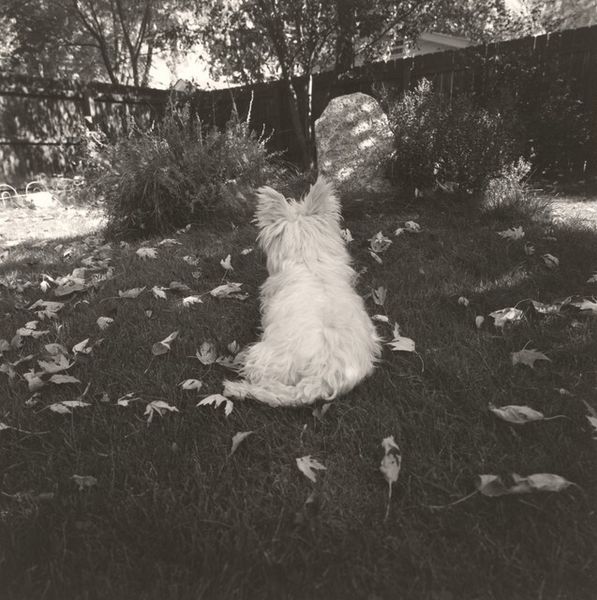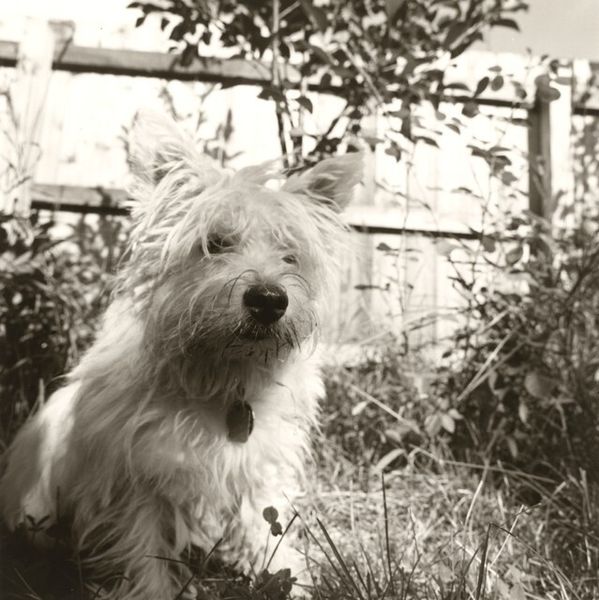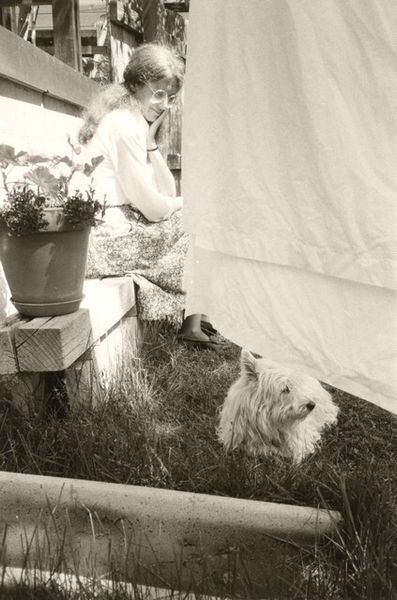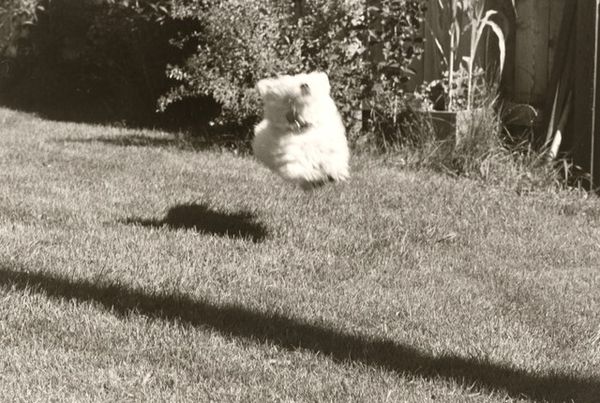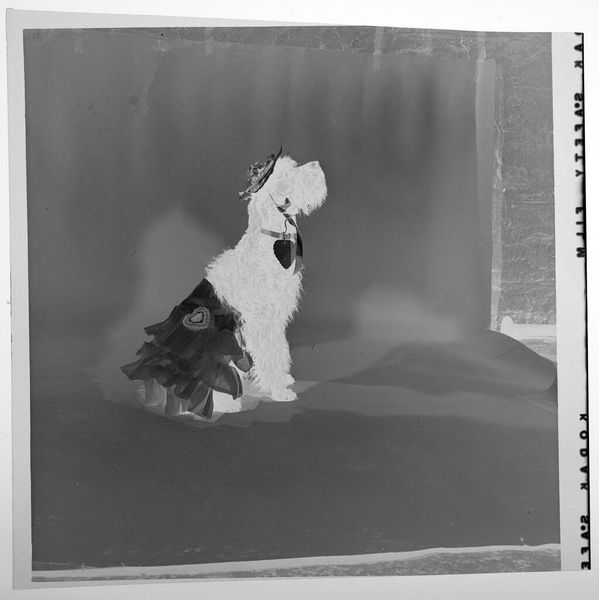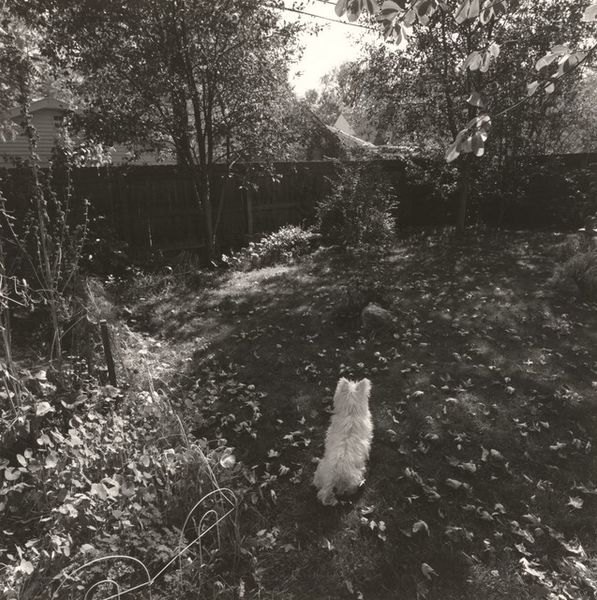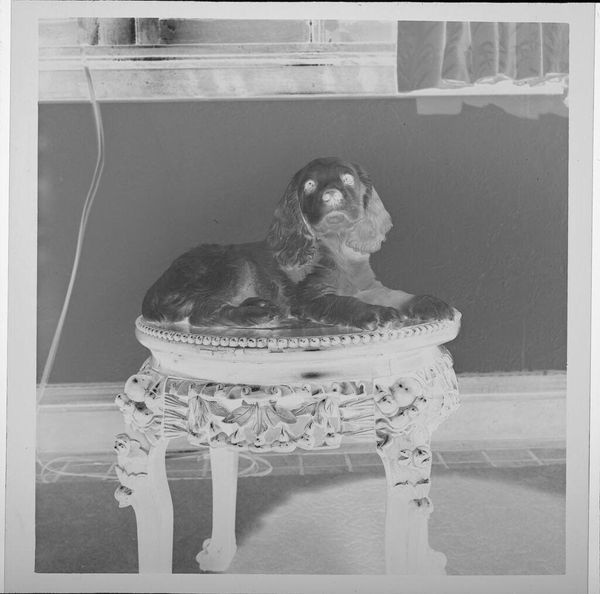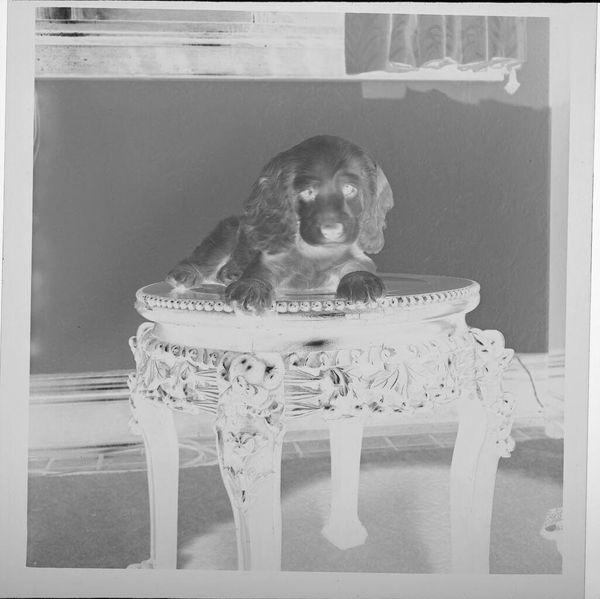
photography, gelatin-silver-print
#
pet photography
#
wildlife photography
#
nature photography
#
landscape
#
photography
#
tree
#
macro shot
#
animal portrait
#
gelatin-silver-print
#
macro photography
#
animal photography
#
natural form
#
realism
#
nature closeup
Dimensions: image: 13.4 × 19.9 cm (5 1/4 × 7 13/16 in.) sheet: 35.4 × 27.6 cm (13 15/16 × 10 7/8 in.)
Copyright: National Gallery of Art: CC0 1.0
Curator: Robert Adams’ "Longmont, Colorado" presents us with a gelatin-silver print crafted over a decade, from 1982 to 1992. It’s a deceptively simple image. Editor: Whoa, it's giving me serious Blair Witch Project vibes, but make it fluffy? I mean, at first glance, all I see is a fuzzy white creature lurking in the dark...with killer ears. Curator: (chuckles) Well, think of it beyond a monster movie aesthetic! Adams' work often investigates the relationship between nature and suburban development in the American West. What looks "natural" here, and how does it function politically, socially? Editor: Okay, okay, point taken. Looking closer...the way the light hits those tufts of fur, almost angelically...But the blackness around it is so intense. I mean, is that really just foliage? Feels almost menacing, encroaching. Curator: Precisely. Adams uses that contrast to highlight the tensions within the seemingly idyllic suburban landscape. We’re asked to consider the built environment encroaching on what remains of untouched nature. It makes you think about loss, right? And the ethics of how we occupy space. Whose space are we really talking about? Editor: Okay, heavy. So that fluffy creature…a stand-in for lost innocence, maybe? Or the disrupted natural world staring back at us from the shadows? I was totally being glib earlier but, man, it’s unsettling now. I initially saw a spooky horror flick... now it makes me consider corporate expansion in quiet neighborhoods. Curator: It could be both. Adams’ photographs operate in those interstitial spaces, simultaneously beautiful and unsettling. He captured these images as the suburbs in Colorado underwent dramatic transformation in an effort to document a moment of ecological anxiety, of the destruction that took place to prioritize the market. Editor: Right. I dig how a simple black-and-white snapshot can carry that weight. That's great art. Curator: Indeed. The tension in the photograph between natural, almost idealized, forms and creeping shadows embodies much larger systemic tension, of not only suburbanization but other important sociological, political, and historical phenomena, too. Editor: You got me thinking about more than doggy pics, I have to say. I will never look at those ears the same way again, especially if the conversation stays focused on consumerism's effects on local, and indigenous lands.
Comments
No comments
Be the first to comment and join the conversation on the ultimate creative platform.



